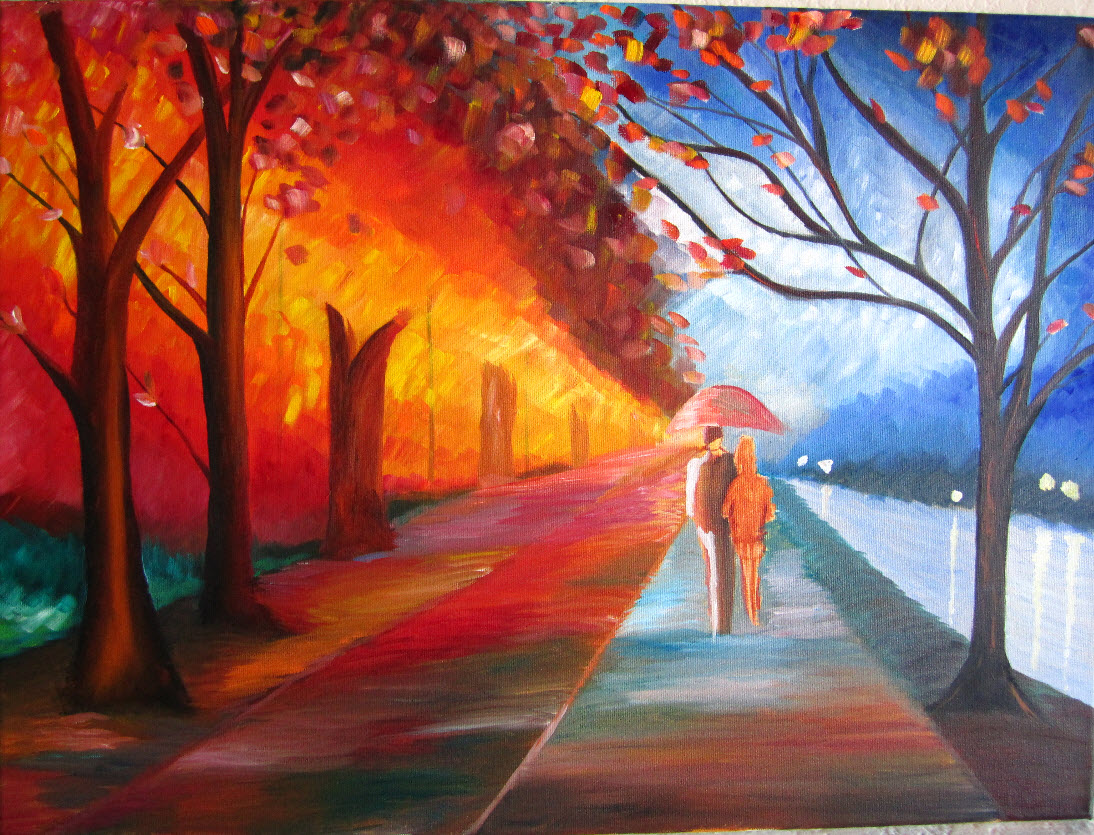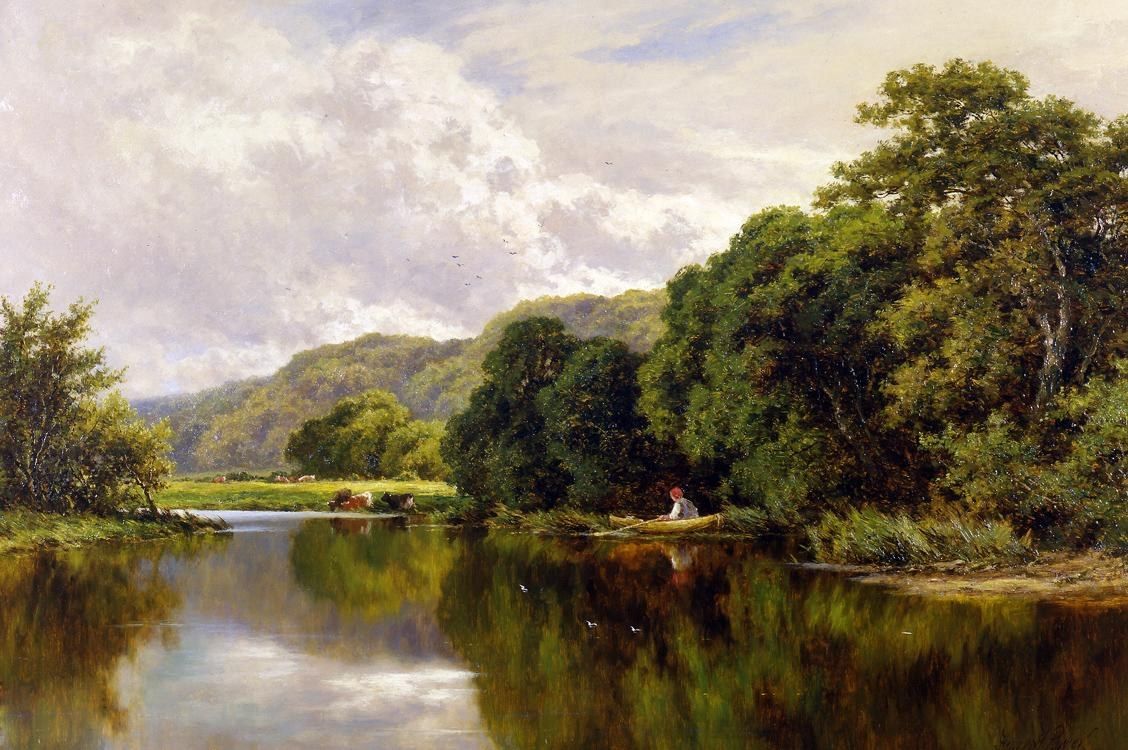Handmade Paintings Of Nature Biography
(Source google.com)
Madhubani painting or Mithila painting is a style of Indian painting, practiced in the Mithilaregion of Bihar state, India and the adjoining parts of Terai in Nepal. Painting is done with fingers, twigs, brushes, nib-pens, and matchsticks, using natural dyes and pigments, and is characterized by eye-catching geometrical patterns. There are paintings for each occasion and festival such as birth, marriage, holi, surya shasti, kali puja, Upanayanam, durga puja etc.
Madhubani painting/Mithila painting has been done traditionally by the women of villages around the present town of Madhubani and Darbhanga (the literal meaning of Madhubani is forests of honey) and other areas of Mithila. The painting was traditionally done on freshly plastered mud walls and floors of huts, but now they are also done on cloth, T-Shirt, handmade paper and canvas.Madhubani paintings are made from the paste of powdered rice. Madhubani painting has remained confined to a compact geographical area and the skills have been passed on through centuries, the content and the style have largely remained the same. And that is the reason for Madhubani painting being accorded the coveted GI (Geographical Indication) status. Madhubani paintings also use two dimensional imagery, and the colors used are derived from plants. Ochre and lampblack are also used for reddish brown and black respectively. Madhubani paintings mostly depict the men & its association with nature and the scenes & deity from the ancient epics. Natural objects like the sun, the moon, and religious plants like tulsi are also widely painted, along with scenes from the royal court and social events like weddings. Generally no space is left empty; the gaps are filled by paintings of flowers, animals, birds, and even geometric designs. Objects depicted in the walls of kohabar ghar (where newly wed couple see each other in the first night) are symbols of sexual pleasure and procreation. Traditionally, painting was one of the skills that was passed down from generation to generation in the families of the Mithila Region, mainly by women. ArdhNarishwar by one of India's well known Madhubani Artist Vidushini colors used are derived from plants. Ochre and lampblack are also used for reddish brown and black respectively. Madhubani paintings mostly depict the men & its association with nature and the scenes & deity from the ancient epics. Natural objects like the sun, the moon, and religious plants like tulsi are also widely painted, along with scenes from the royal court and social events like weddings. Generally no space is left empty; the gaps are filled by paintings of flowers, animals, birds, and even geometric designs. Objects depicted in the walls of kohabar ghar (where newly wed couple see each other in the first night) are symbols of sexual pleasure and procreation. Traditionally, painting was one of the skills that was passed down from generation to generation in the families of the Mithila Region, mainly by women. ArdhNarishwar by one of India's well known Madhubani Artist Vidushini Some organisations help poor families to sell their Madhubani painting worldwide through their portal and arranging exhibitions. There are five distinctive styles in Madhubani art -Bharni, Katchni, Tantrik, Godna & Gobar painting . In 60's Bharni, katchni & tantrik styles were mostly practise by upper caste and Godna & Gobar style by Harijan & Dalits . Now-a-days there is no caste-bar among the artists for their creativity in Madhubani Art . Work in Madhubani Art can be seen in Craft Museum - New delhi, Chandradhari Mithila museum - Darbhanga, Museum of sacred Art - Belgium, Mithila museum- Japan, Museum of Norway & many other places .
Madhubani painting received official recognition in 1970, when the President of India gave an award to Jagdamba Devi, of Jitbarpur village near Madhubani. Other painters, Mahasundari Devi (2008), Sita Devi, Godavari Dutt, Bharti Dayal and Bua Devi were also given National award. Smt Bharti Dayal won an Award from All India Fine Arts and Crafts for fifty years of art in independent India and the state Award for kalamkari in Mithila Painting and her painting "Eternal Music" bagged the top award in Millennium Art Competition from AIFAC for the year 2001. Smt Bharti Dayal is also Honoured with The Vishist Bihari Samman amid festivities to commemorate 100 year of Bihar. She has been honoured with Indira Gandhi Priyadarshini Award 2013 for her exceptional work in Madhubani Art, globally too.
Handmade Paintings Of Nature Pintings of Nature Abstract on Canvas for Kids Scenes Love Beauty and Environment Wallpapers Easy Scenery

Handmade Paintings Of Nature Pintings of Nature Abstract on Canvas for Kids Scenes Love Beauty and Environment Wallpapers Easy Scenery
Handmade Paintings Of Nature Pintings of Nature Abstract on Canvas for Kids Scenes Love Beauty and Environment Wallpapers Easy Scenery

Handmade Paintings Of Nature Pintings of Nature Abstract on Canvas for Kids Scenes Love Beauty and Environment Wallpapers Easy Scenery
Handmade Paintings Of Nature Pintings of Nature Abstract on Canvas for Kids Scenes Love Beauty and Environment Wallpapers Easy Scenery
Handmade Paintings Of Nature Pintings of Nature Abstract on Canvas for Kids Scenes Love Beauty and Environment Wallpapers Easy Scenery
Handmade Paintings Of Nature Pintings of Nature Abstract on Canvas for Kids Scenes Love Beauty and Environment Wallpapers Easy Scenery
Handmade Paintings Of Nature Pintings of Nature Abstract on Canvas for Kids Scenes Love Beauty and Environment Wallpapers Easy Scenery
Handmade Paintings Of Nature Pintings of Nature Abstract on Canvas for Kids Scenes Love Beauty and Environment Wallpapers Easy Scenery
Handmade Paintings Of Nature Pintings of Nature Abstract on Canvas for Kids Scenes Love Beauty and Environment Wallpapers Easy Scenery
Handmade Paintings Of Nature Pintings of Nature Abstract on Canvas for Kids Scenes Love Beauty and Environment Wallpapers Easy Scenery
Handmade Paintings Of Nature Pintings of Nature Abstract on Canvas for Kids Scenes Love Beauty and Environment Wallpapers Easy Scenery
Handmade Paintings Of Nature Pintings of Nature Abstract on Canvas for Kids Scenes Love Beauty and Environment Wallpapers Easy Scenery
Handmade Paintings Of Nature Pintings of Nature Abstract on Canvas for Kids Scenes Love Beauty and Environment Wallpapers Easy Scenery

No comments:
Post a Comment